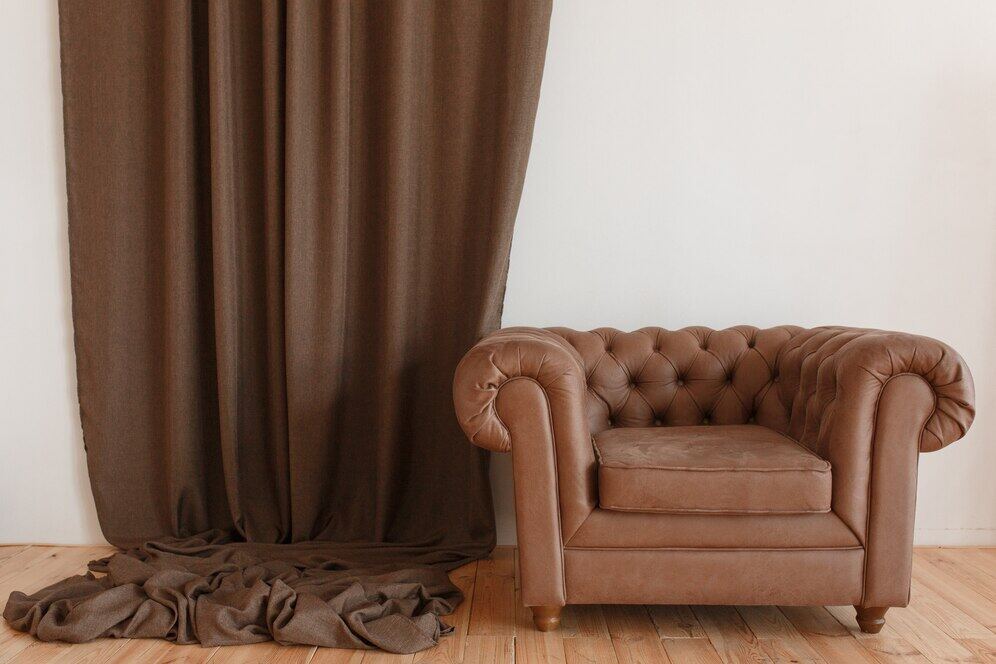Email format error
Email cannot be empty
Email already exists
6-20 characters(letters plus numbers only)
The password is inconsistent
Email format error
Email cannot be empty
Email does not exist
6-20 characters(letters plus numbers only)
The password is inconsistent

News

How to Extend the Lifespan of Leather Furniture through Proper Care and Storage
Leather furniture exudes timeless elegance and sophistication, adding a touch of luxury to any home or office space. However, to maintain its beauty and functionality for years to come, proper care and storage are essential. In this comprehensive guide, we'll explore practical tips and techniques to help you extend the lifespan of your leather furniture, ensuring that it remains a cherished investment for generations to come.
Understanding the Value of Leather Furniture
Before delving into the specifics of care and storage, it's important to understand why leather furniture is worth preserving. Unlike other materials, such as fabric or synthetic upholstery, genuine leather boasts unparalleled durability, comfort, and aesthetic appeal. It ages gracefully, developing a unique patina over time that adds character and charm to your furniture. Additionally, leather is naturally resistant to stains, spills, and odors, making it a practical choice for busy households or high-traffic areas. By investing in leather furniture, you're not just acquiring a piece of decor; you're investing in quality craftsmanship and enduring style.
Regular Cleaning and Maintenance: The Key to Longevity
One of the most effective ways to prolong the lifespan of your leather furniture is through regular cleaning and maintenance. Dust, dirt, and grime can accumulate on the surface over time, dulling its appearance and potentially causing damage if left untreated. To prevent this, it's recommended to gently dust or vacuum your leather furniture regularly using a soft brush attachment or a microfiber cloth. This removes surface debris and helps maintain its luster.
For deeper cleaning, use a mild leather cleaner specifically formulated for the type of leather used in your furniture. Avoid harsh chemicals or abrasive cleaners, as these can strip away the natural oils and finish of the leather, leading to dryness and cracking. Instead, opt for gentle, pH-balanced products that nourish and protect the leather while removing stubborn stains or spills. Be sure to follow the manufacturer's instructions and test any new cleaning products in an inconspicuous area before applying them to the entire surface.
Proper Moisturizing and Conditioning: Nourish Your Leather
Just like your skin, leather furniture requires regular moisturizing and conditioning to stay soft, supple, and resilient. Over time, exposure to dry air, sunlight, and fluctuating humidity levels can cause leather to lose its natural oils, resulting in dryness, stiffness, and potential cracking. To counteract this, it's essential to moisturize and condition your leather furniture periodically using a high-quality leather conditioner or cream.
Apply the conditioner sparingly to a clean, dry cloth, then gently massage it into the leather using circular motions. Pay particular attention to areas that are prone to dryness or cracking, such as armrests, seat cushions, and backrests. Allow the conditioner to penetrate the leather for a few minutes, then buff away any excess with a clean cloth. This helps restore moisture and flexibility to the leather, keeping it soft and supple for years to come.
Protecting Against Sun Damage and Fading: Shielding Your Furniture
Exposure to direct sunlight can cause leather furniture to fade, discolor, or become brittle over time, detracting from its beauty and longevity. To protect your furniture against sun damage, position it away from windows or use window treatments such as blinds or curtains to minimize exposure to UV rays. Additionally, consider applying a UV-resistant leather protectant or conditioner to create a barrier against harmful sunlight and maintain the vibrancy of your furniture's color.
Choosing the Right Storage Solutions: Preserve and Protect
When not in use, proper storage is essential to safeguarding the integrity of your leather furniture and prolonging its lifespan. Avoid placing leather furniture in areas prone to excessive heat, moisture, or humidity, as these conditions can promote mold growth, mildew, or deterioration of the leather. Instead, store your furniture in a cool, dry environment away from direct sunlight and fluctuating temperature extremes.
If you need to store leather furniture for an extended period, take extra precautions to protect it from dust, dirt, and pests. Cover your furniture with breathable, moisture-resistant covers or sheets to prevent accumulation of dust and debris while allowing air circulation. Additionally, consider placing desiccant packets or moisture absorbers in the storage area to maintain optimal humidity levels and prevent mold or mildew growth.
Conclusion: Preserving the Beauty of Leather Furniture
In conclusion, leather furniture is a timeless investment that adds warmth, sophistication, and style to any space. By following these simple tips for care and storage, you can extend the lifespan of your leather furniture and ensure that it remains a cherished centerpiece in your home or office for years to come. From regular cleaning and moisturizing to protecting against sun damage and choosing the right storage solutions, a little TLC goes a long way in preserving the beauty and integrity of your leather furniture. So, why wait? Start implementing these strategies today and enjoy your leather furniture for generations to come.

